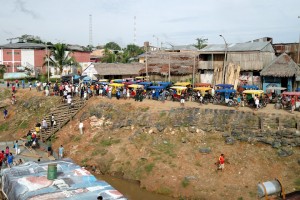Getting to Santa Rosa (the border)
1. Feel incredibly bored.
You’ve been on this boat for three days, floating the Amazon from Iquitos, with nothing else to do but cradle yourself in your hammock and read. Before that it was three days in another boat down the Maranõn River from Yurimaguas.
The sunsets, orange and violet and blue like you’ve never seen, still impress, but the riverbank scenery — sometimes dense green, sometimes flat, sometimes with villages of wood houses and thatched roofs, other times villages with packed markets and mototaxis — no longer does it for you.




